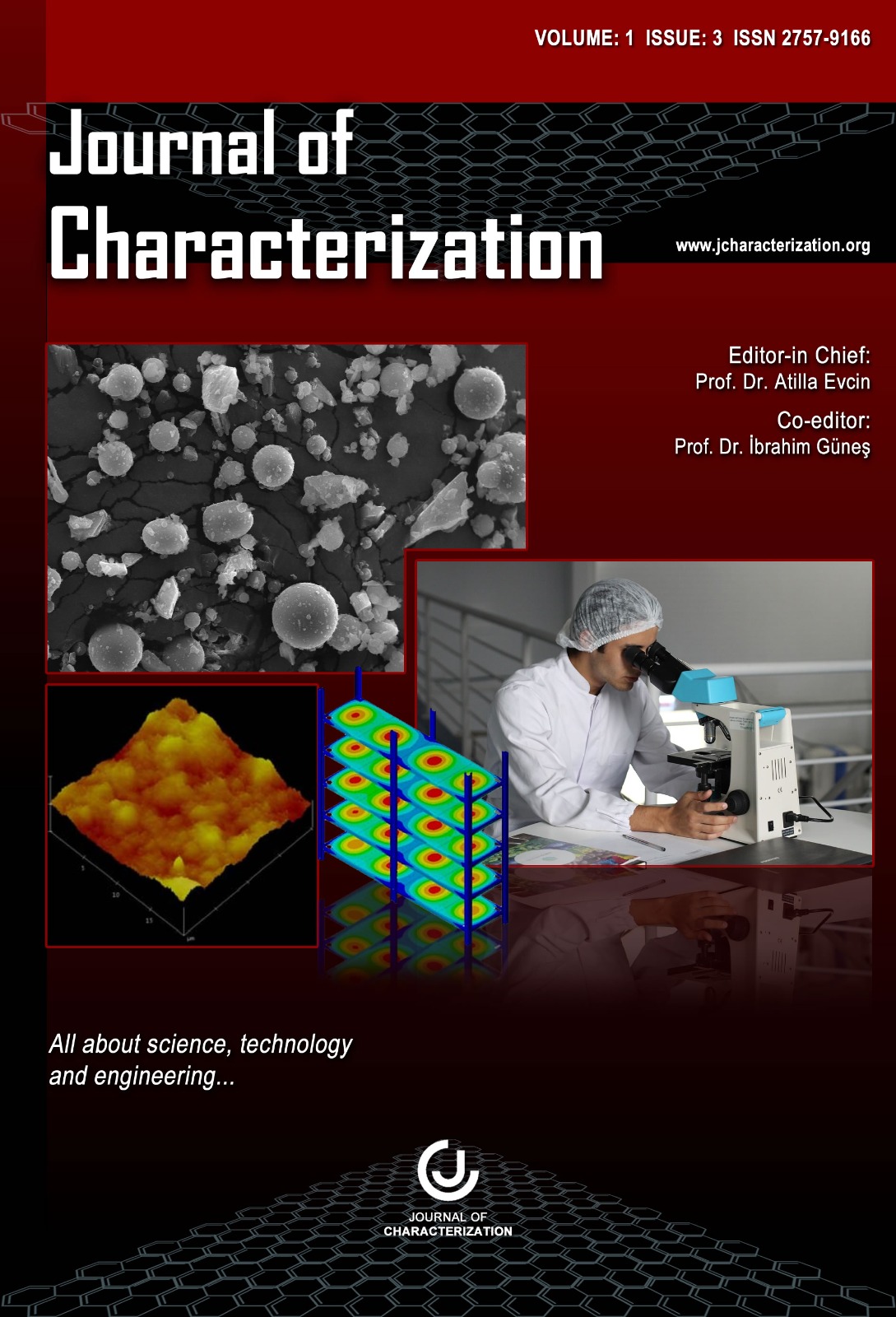Ergiyik Harmanlama ile Üretilen Polimetilmetakrilat (PMMA)/Cam Fiber Kompozitlerin Mekanik ve Tribolojik Özelliklerinin İncelenmesi
Author :
Abstract
Bu çalışmada, ağırlıkça farklı yüzdelerde (%5-10-20-30) cam fiber içeren polimetilmetakrilat (PMMA) matrisli kompozitlerin mekanik ve aşınma direnci özellikleri araştırılmıştır. Üretimde çift vidalı bir ekstrüder kullanılarak ergiyik harmanlama yöntemi tercih edilmiş olup, test numunelerinin üretiminde ise enjeksiyon kalıplamadan faydalanılmıştır. Kompozitlerin mekanik özellikleri 3-nokta eğme ve Shore D sertlik ölçümleri ile, aşınma özellikleri ise özel üretim bir ball-on-disk kuru kayma aşınma test cihazı kullanılarak incelenmiştir. Benzer şartlarda şekillendirilen saf PMMA da aynı testlerde kontrol numunesi olarak kullanılmış ve cam fiber konsantrasyonuna bağlı olarak bahsedilen testlerin sonuçları yorumlanmıştır. En yüksek eğme gerilmesi ve elastiklik modülü değerlerine (sırasıyla 121 MPa ve 7354 MPa) %30 cam fiber içeren PM30 numunesi ile ulaşılmıştır. Benzer şekilde, yüksek sertlik, düşük sürtünme ve düşük aşınma oranı gibi özellikler %20 ve %30 cam fiber içeren kompozitlerde gözlenmiştir. Bu durum, cam fiber içeriğindeki artışın kompozit rijitliğini arttırması ayrıca yorulma aşınması direncinin de iyileştirmesi ile ilişkilendirilmiştir.
Keywords
Abstract
In this study, mechanical and wear resistance properties of polymethylmethacrylate (PMMA) matrix composites containing glass fiber in different weight percentages (5-10-20-30%) were investigated. Melt blending method was preferred using a twin screw extruder in production, and injection molding was used in the production of test samples. The mechanical properties of the composites were investigated by 3-point bending and Shore D hardness measurements, and the wear properties were examined using a custom-made ball-on-disk dry sliding wear tester. Pure PMMA shaped under similar conditions was also used as a control sample in the same tests and the results of the mentioned tests were interpreted depending on the glass fiber concentration. The highest bending stress and modulus of elasticity values (121 MPa and 7354 MPa, respectively) were obtained with PM30 sample containing 30% glass fiber. Similarly, properties such as high hardness, low friction and low wear rate were observed in composites containing 20% and 30% glass fiber. This situation was associated with the increase in the glass fiber content, increasing the stiffness of the composite and also improving the fatigue wear resistance.
Keywords
- [1] J. Jang and S. Han, “Mechanical properties of glass-fibre mat/PMMA functionally gradient composite”, Composites: Part A, 30, pp. 1045–1053, 1999.
- [2] T. Xie and G. Yang, “Interface and mechanical properties of poly(methyl methacrylate)– fiber composites”, Journal of Applied Polymer Science, 93, pp. 2478–2483, 2004.
- [3] D. A. Felton and B. R. Lang, “Flexural properties of acrylic resin polymers reinforced with unidirectional and woven glass fibers”, The Journal of Prosthetic Dentistry, 81(3), pp. 318–326, 1999.
- [4] R. B. Fonseca, I. N. Favarão, A. V. B. Kasuya, M. Abrão, N. F. M. da Luz and L. Z. Naves, “Influence of glass fiber wt% and silanization on mechanical flexural strength of reinforced acrylics”, Journal of Materials Science and Chemical Engineering, 2, pp. 11– 15, 2014.
- [5] M. Mathew, K. Shenoy and K. S. Ravishankar, “Flexural Strength of E-glass-reinforced PMMA”, International Journal of Experimental Dental Science, 3(1), pp. 24–28, 2014.
- [6] S. Garoushi, P. K. Vallittu and L. V. J. Lassila, “Short glass fiber reinforced restorative composite resin with semi-inter penetrating polymer network matrix”, Dental Materials, 23, pp. 1356–1362, 2007.
- [7] P. K. Valittu and K. Narva, “Impact strength of a modified continuous glass fiber– poly(methyl methacrylate)”, The International Journal of Prosthodontics, 10(2), pp. 142–148, 1997.
- [8] D. S. Cousins, Y. Suzuki, R. E. Murray, J. R. Samaniuk and A. P. Stebner, “Recycling glass fiber thermoplastic composites from wind turbine blades”, Journal of Cleaner Production, 209, pp. 1252–1263, 2019.
- [9] S. Huang, Q. Fu, L. Yan and B. Kasal, “Characterization of interfacial properties between fibre and polymer matrix in composite materials – A critical review”, Journal of Materials Research and Technology, 13, pp. 1441–1484, 2021.
- [10] J. Zeng, B. Saltysiak, W. S. Johnson, D. A. Schiraldi and S. Kumar, “Processing and properties of poly(methyl methacrylate)/carbon nanofiber composites”, Composites: Part B, 35, pp. 245–249, 2004.
- [11] P. Threepopnatkul and C. Kulsetthanchalee, “Effect of sisal fiber on flexural and impact properties of PMMA-b-PU composites”, Materials Today: Proceedings, 17, pp. 2002–
- [12] N. Saha, A. N. Banerjee and B. C. Mitra, “Flexural behavior of unidirectional polyethylene-glass fiber-PMMA hybrid composites”, Polymers for Advanced Technologies, 6, pp. 637–642, 1995.
- [13] D. Olmos, K. Bagdi, J. Mózcó, B. Pukánszky and J. González-Benito, “Morphology and interphase formation in epoxy/PMMA/glass fiber composites: Effect of the molecular weight of the PMMA”, Journal of Colloid and Interface Science, 360, pp. 289–299, 2011.
- [14] D. S. Cousins, C. Lowe, D. Swan, R. Barsotti, M. Zhang, K. Gleich, D. Berry, D. Snowberg and J. R. Dorgan, “Miscible blends of biobased poly(lactide) with poly(methyl methacrylate): Effects of chopped glass fiber incorporation”, Journal of Applied Polymer Science, 44868, pp. 1–12, 2017.
- [15] S. Savaş and A. Y. Al-Obaidi, “Influence of PP-g-MA compatibilization on the mechanical and wear properties of polypropylene/thermoplastic polyurethane blends”, Tribology Transactions, 61(4), pp. 754–764, 2018.
- [16] W. Österle, A. I. Dmitriev, B. Wetzel, G. Zhang, I. Häusler and B. C. Jim, “The role of carbon fibers and silica nanoparticles on friction and wear reduction of an advanced polymer matrix composite”, Materials and Design, 93, pp. 474–484, 2016.
- [17] N. K. Myshkin, M. I. Petrokovets and A. V. Kovalev, “Tribology of polymers: Adhesion, friction, wear, and mass-transfer”, Tribology International, 38, pp. 910–921, 2005.





